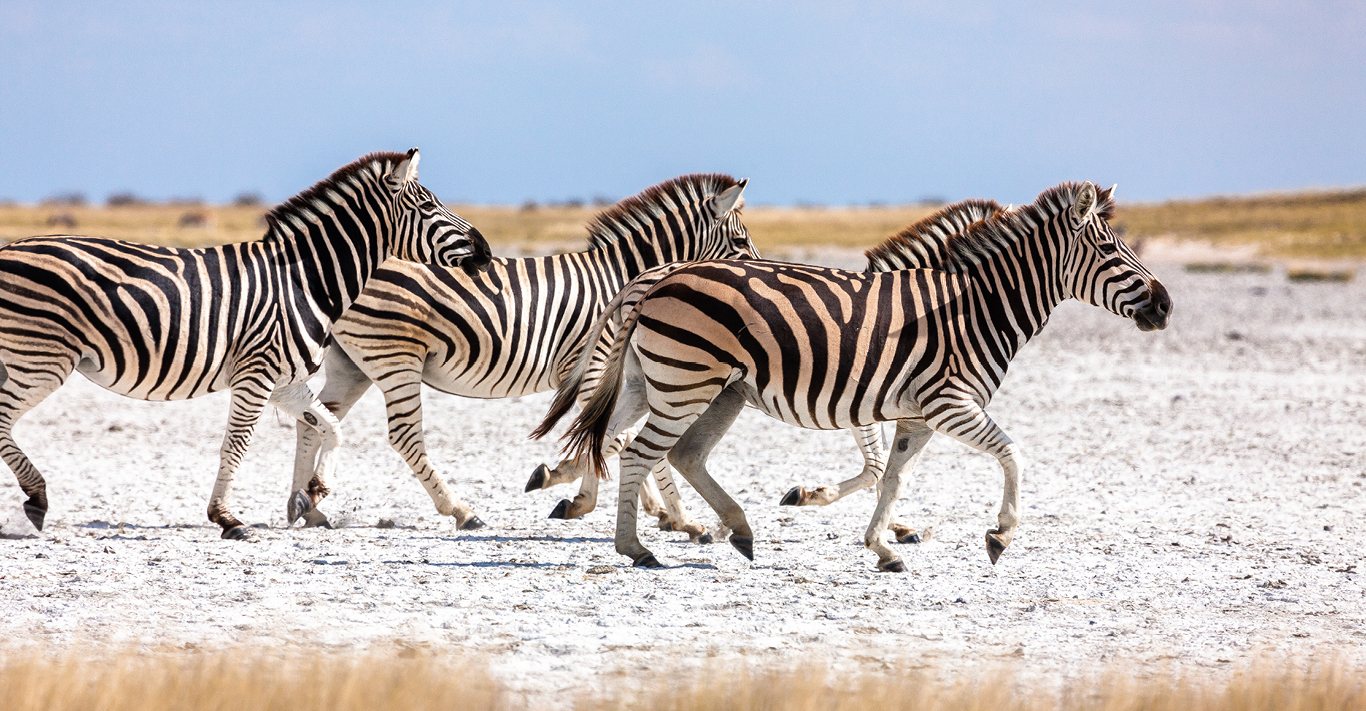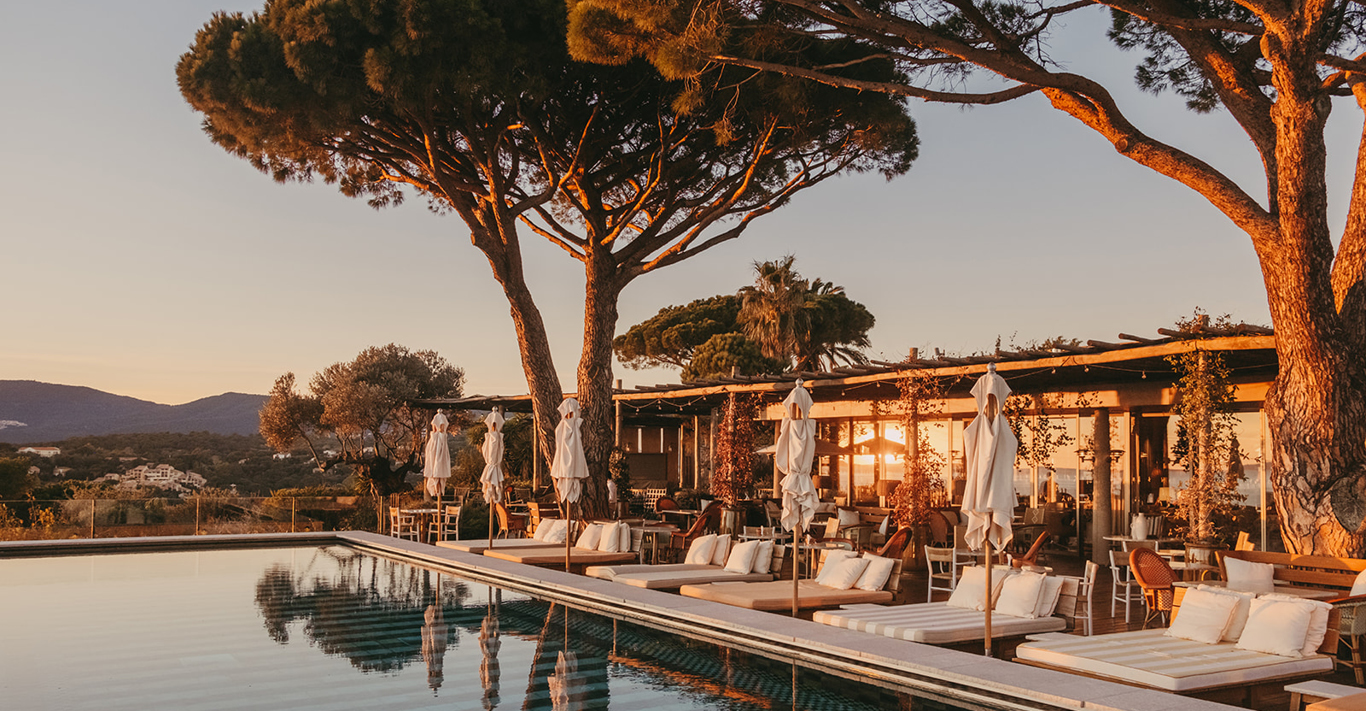WORDS
Ian Belcher
On a heavy, heat-infested African morning, the only sounds are squeaks, scratches and tearing flesh. Every few minutes, a new victim meets a grisly Tarantinoesque fate.
I’m tuned into meerkat frequency. To follow the petite photogenic carnivores on a breakfast hunt is to witness nature scarlet in tooth and talon. After detecting a lizard or scorpion sheltering underground, they dig frantically before administering a brutal coup de grâce. It’s startlingly efficient violence.
The eight ridiculously cute, semi-habituated meerkats who happily let me lie down just inches away, even climbing onto my hip to scan for predators, are the stars of Eastern Botswana’s Makgadikgadi: the largest expanse of salt pans on Earth. Threaded with honey-hued Kalahari grasslands on which thousand-year-old baobab trees and spikey aloe vera lurk like invading aliens, the “Great Nothing” offers a radically different take on conventional safaris.
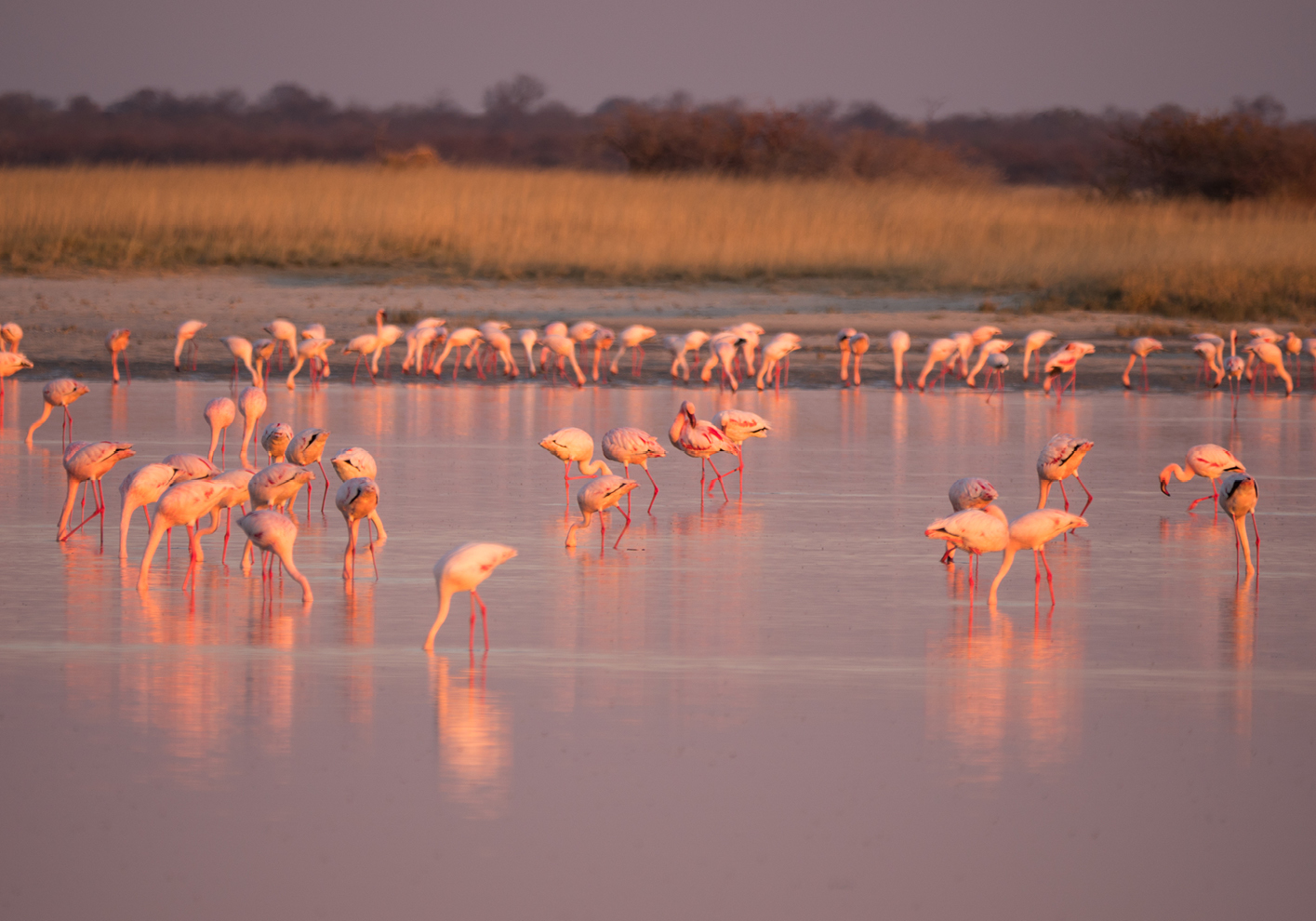
I don shades to cope with Ntwetwe Pan’s glaring salt crust. Along with neighbouring Sua – the two pans stretch across 7,000 square miles – it once lay beneath a lake larger than Switzerland. Now it gasps, bakes and bleaches under a savage tropical sun, melding into a hazy white horizon. ‘Look at it,’ sighs my guide, Joshua. ‘Your eyes scream, “Enough please, no more.”’
The apparently barren grasslands in fact seethe with wildlife. Meerkats are just the start. Elephants, kudu and impala wander among ostrich, springbok, oryx and brown hyena. We track two Kalahari lions, an anticlimactic search that discovers them snoozing in long grass.
Were they hungry, there’s plentiful prey. And this isn’t peak hunting season. December’s rain will alchemise the dry grass into an emerald carpet embroidered with wildflowers: a target for 50,000 zebra and wildebeest who pass through on the world’s second-largest mammal migration. Dazzles of 25,000 zebra graze on the nutrient-rich plains as hundreds of thousands of flamingos arrive to devour brine shrimp on the water-covered pans. It’s dramatic stuff.
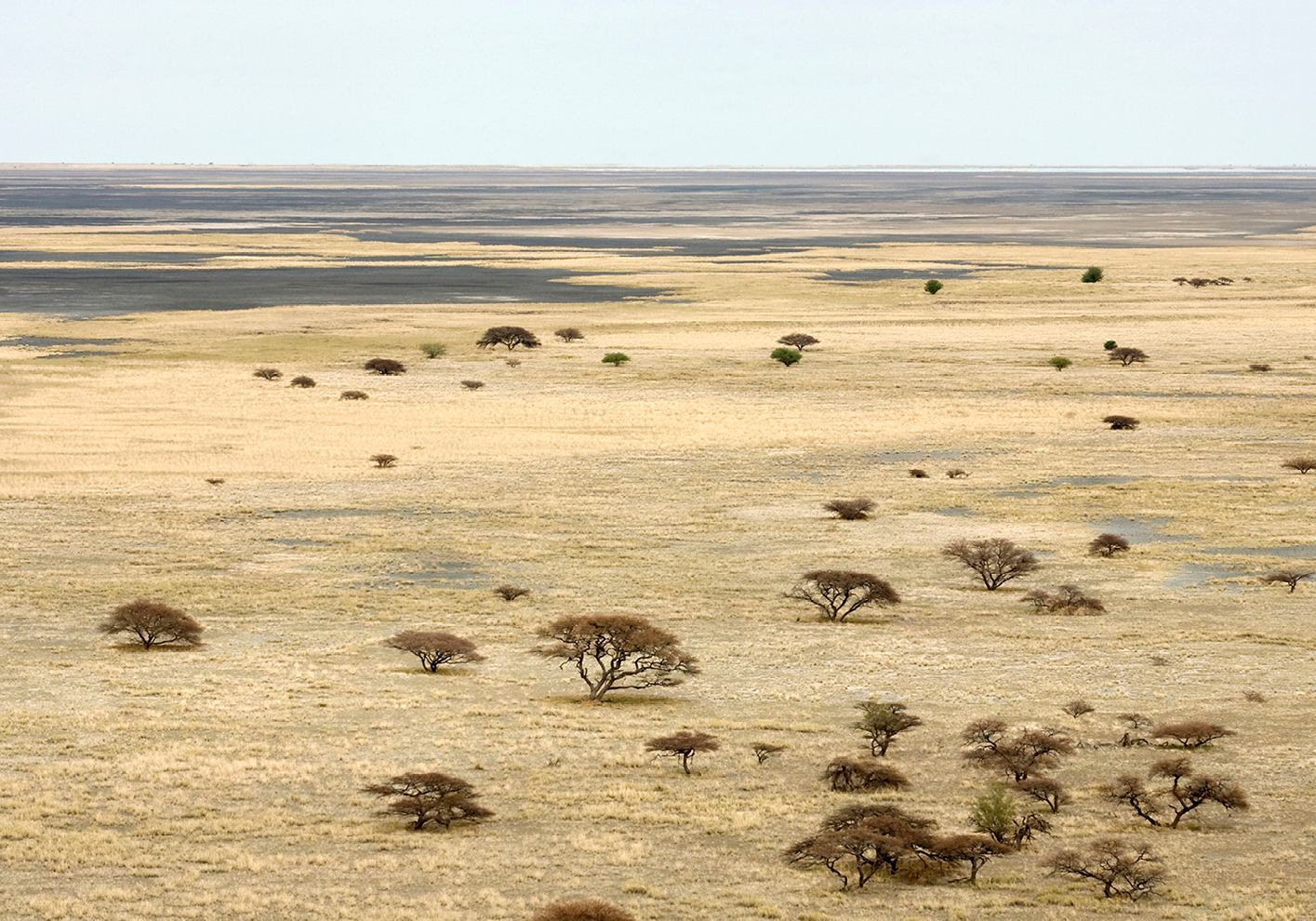
Today’s a little less spectacular; variety rather than volume. My safari drive reveals a range of strange creatures – perfect locals for a landscape worthy of a Salvador Dalí fever dream: hares nicknamed “African kangaroos” that bounce up and down, one eye casting a reflection in your headlights, stiff-legged secretary birds whose feathers suggest they’re wearing cycling shorts, and small but feisty honey badgers who’ll slug it out with the most alpha big cat.
Alongside remarkable wildlife, the Makgadikgadi has remarkable humans: the Zu/’hoasi tribe of San bushmen. As they puff away on hare droppings rolled in brandy bush leaves, a young woman underlines the San’s symbiotic relationship with nature, digging up a huge bulb from the bone-dry soil. Slices are squeezed to provide a trickle of valuable water before the plant is reinterred for future hydration.
The Zu/’hoasi then form a circle for “Springbok v Lightning”: their animated answer to Rock- Paper-Scissors. I study the game, transfixed by deep furrows in the elders’ weather-beaten faces. It’s rude to ask, but how old are they? Cue a series of clicks, head nods and more clicks: a tongue- twisting Khoisan language.
‘They are…’ says my interpreter, following the clicks as if deciphering morse code. ‘They are… many many years.’
‘Many many?’
‘Yes, many many. They’ve no idea.’ Age is, clearly, more than just a number in the Makgadikgadi. Another certainty is that you’ll discover Neolithic flint tools, once used by the Zu/’hoasi’s ancestors, on display in mahogany cases at nearby Jack’s Camp. Offering one of Africa’s most iconic safaris, Jack’s channels vintage explorer chic with a mess tent exhibiting objects more usually found in the Natural History Museum: animal skulls, embalmed ostrich penises, baby mongooses.
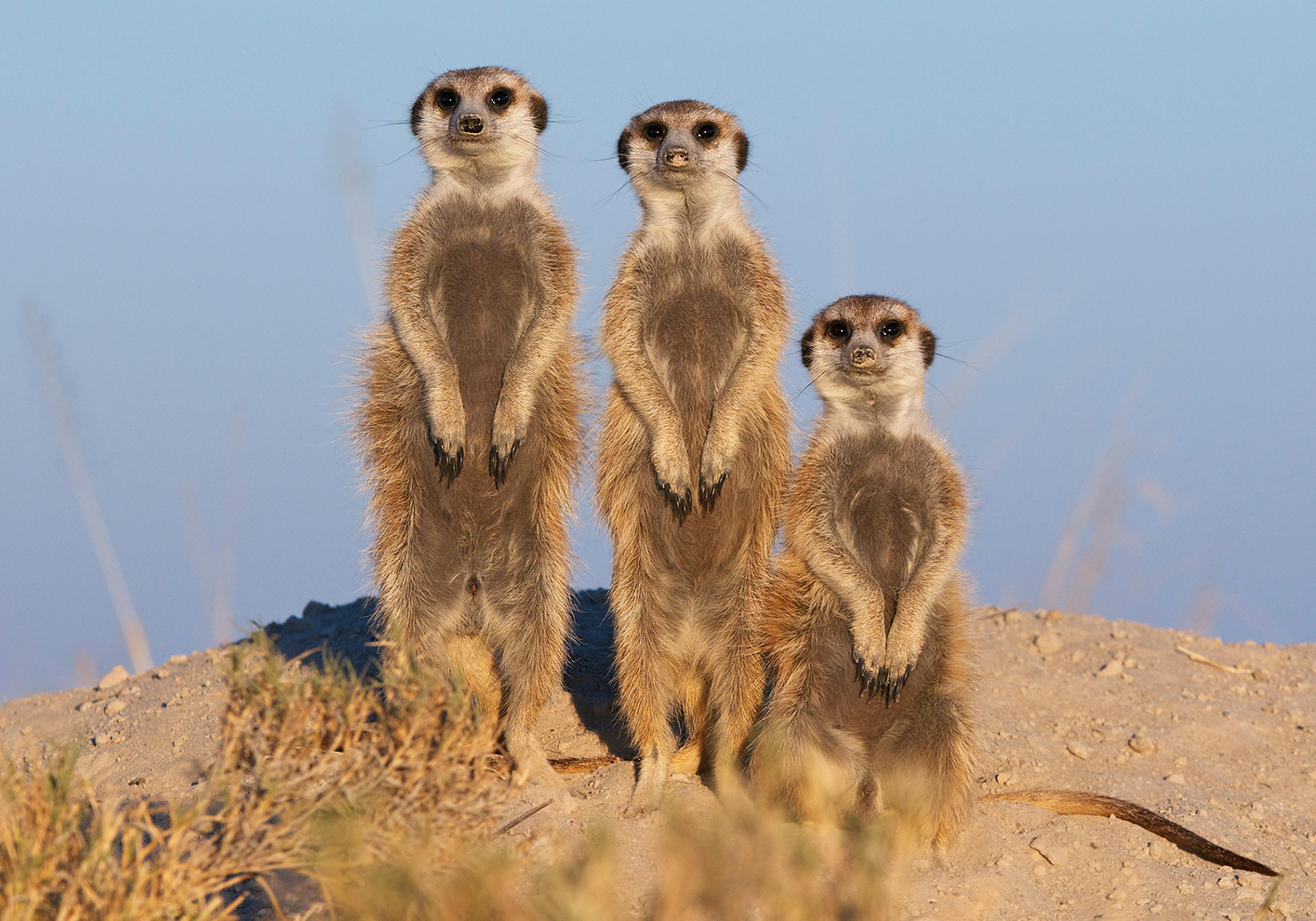
With much of the camp’s furniture and memorabilia passed down through generations of the Bousfield family (the camp’s named after Jack Bousfield, an entrepreneurial hunter who launched Botswana’s first photographic safari in 1962), the mess tent has an antique pool table and drinks chest, alongside fading photographs from the Boer War, old geographic charts and sketches of David Livingstone. My favourite item, an ageing decanter, contains a dark, dangerous mix of chillies, gin and dry sherry. Apparently a decent tipple, I imagine it could also be used to embalm small creatures or fuel a Land Rover.
Jack’s, set among ilala palms fringing Ntwetwe Pan, was revamped two years ago. Its nine generous guest tents include enormous wraparound decks with plunge pools. All have sumptuous textiles, oriental rugs and mounting steps to plump beds, alongside period writing desks and chairs. Bathrooms sport elaborate copper plumbing for Thunderbox lavatories, cabinet wash basins and monsoon showers.
It makes a gloriously atmospheric base for exploration. Not just safaris and meerkats, but an expedition out to Chapman’s Baobab, now lying on its side like a fallen giant. One of the three largest and oldest trees in southern Africa, it was once a stopover point and message board for traders, hunters and missionaries, including David Livingstone en route to Victoria Falls.
At the last sunset we ride quad bikes onto Sua Pan, dust glinting in our wake. I dismount, lie down and watch the vast black sky buried under an astral blizzard of meteors, planets and stars. There isn’t a sound. Just complete and utter silence: a last extraordinary memory of the Makgadikgadi, a land like no other.
Six-night Botswana itinerary including three nights at Jack’s Camp and three at Sanctuary Chief ’s in Okavango Delta from £17,300 including meals, drinks, activities, transfers and flight; abercrombiekent.co.uk


